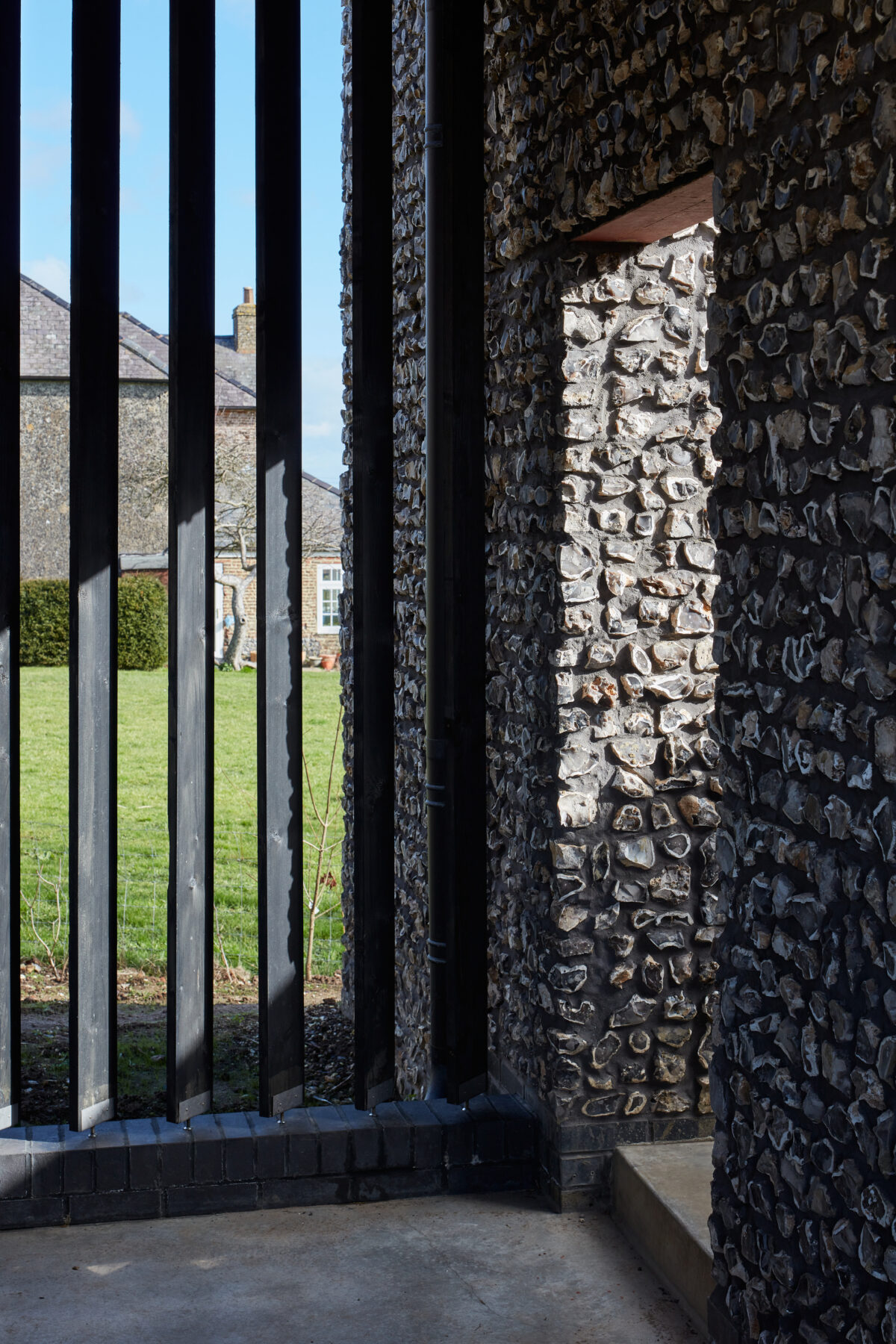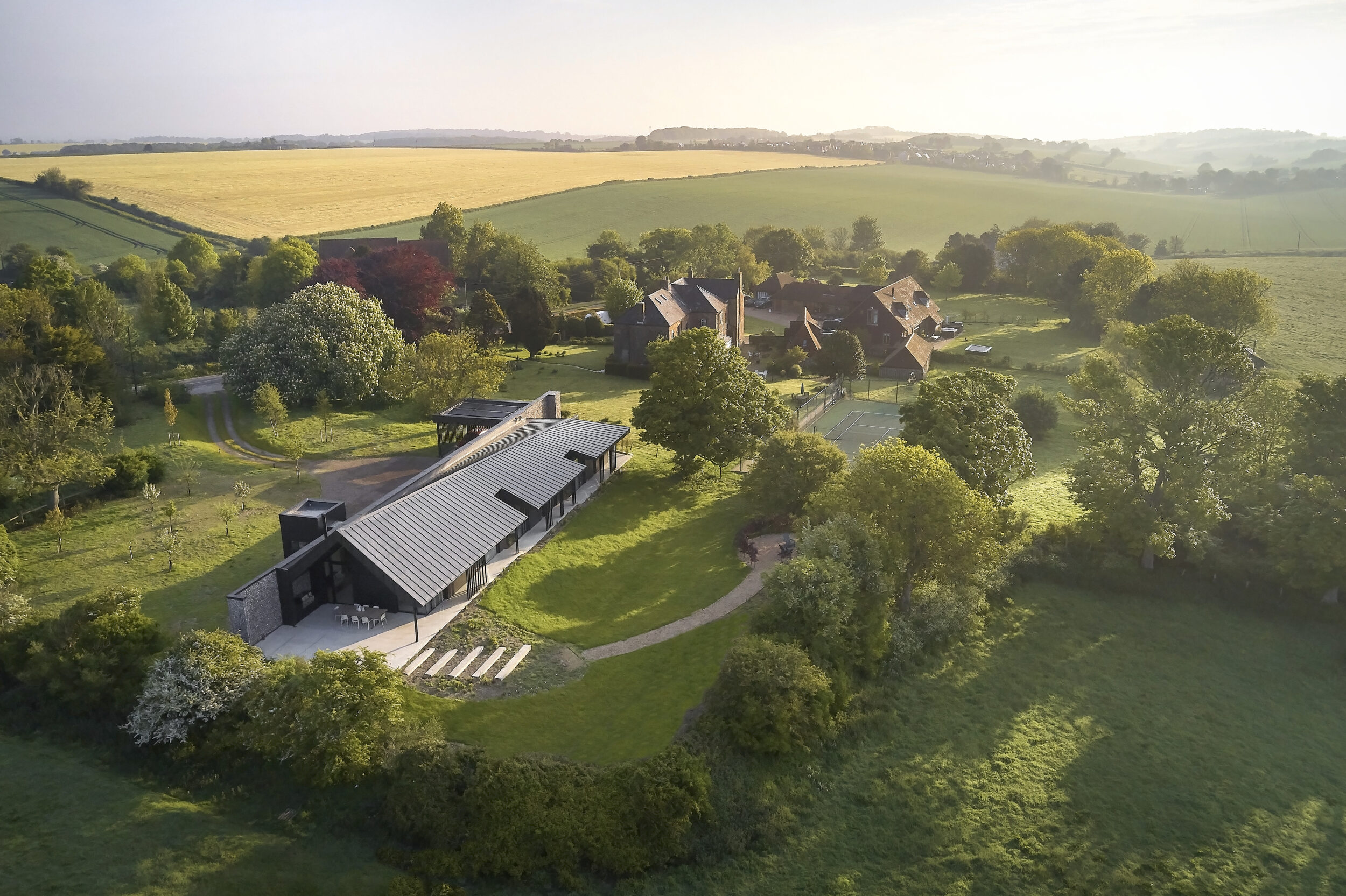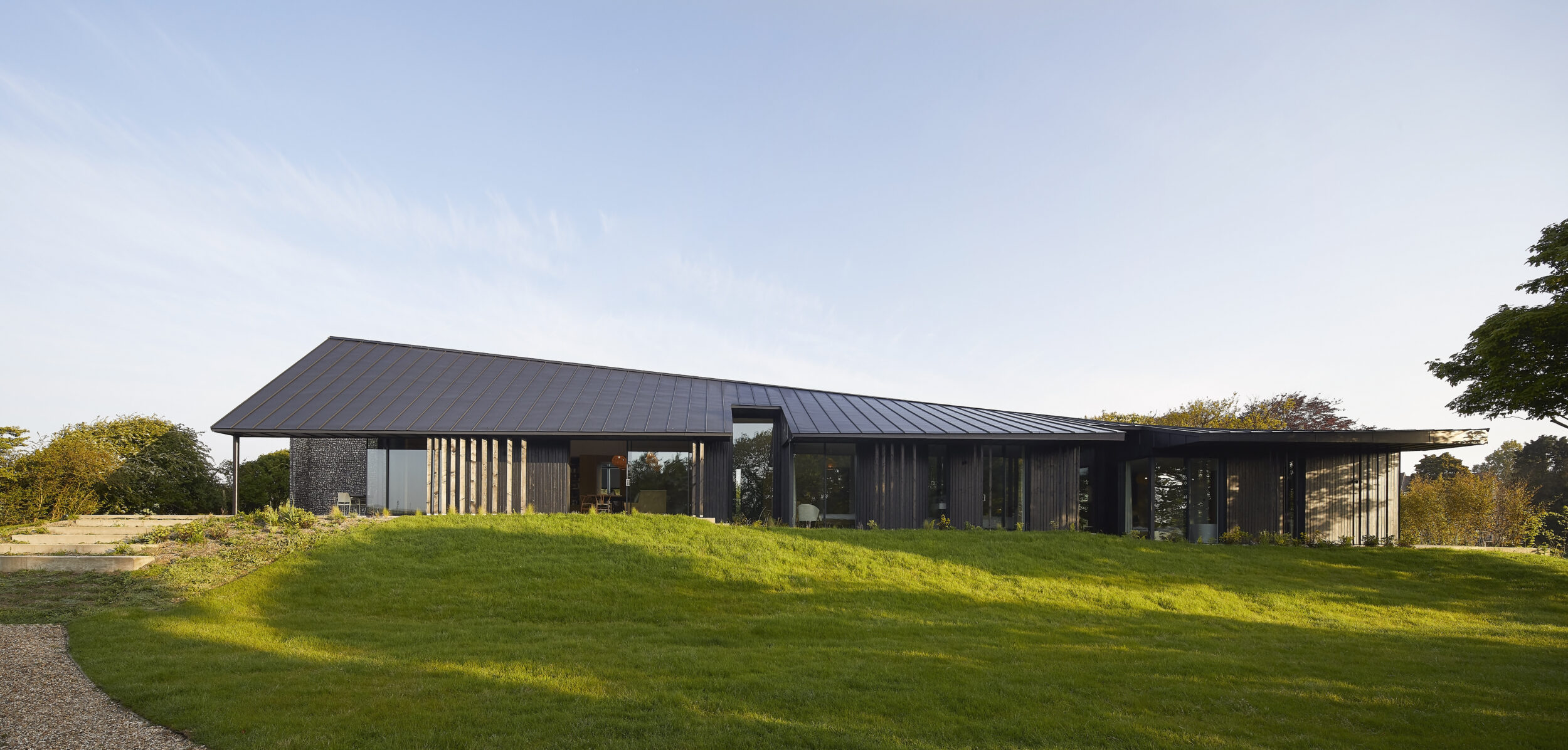
Situated adjacent to the listed Wallets Court within an area of outstanding natural beauty, West Meadow is an immensely sustainable home with a remarkable sensitivity to the local vernacular. Blending seamlessly into the rural St. Margaret’s Cliffe despite its unequivocally contemporary design.
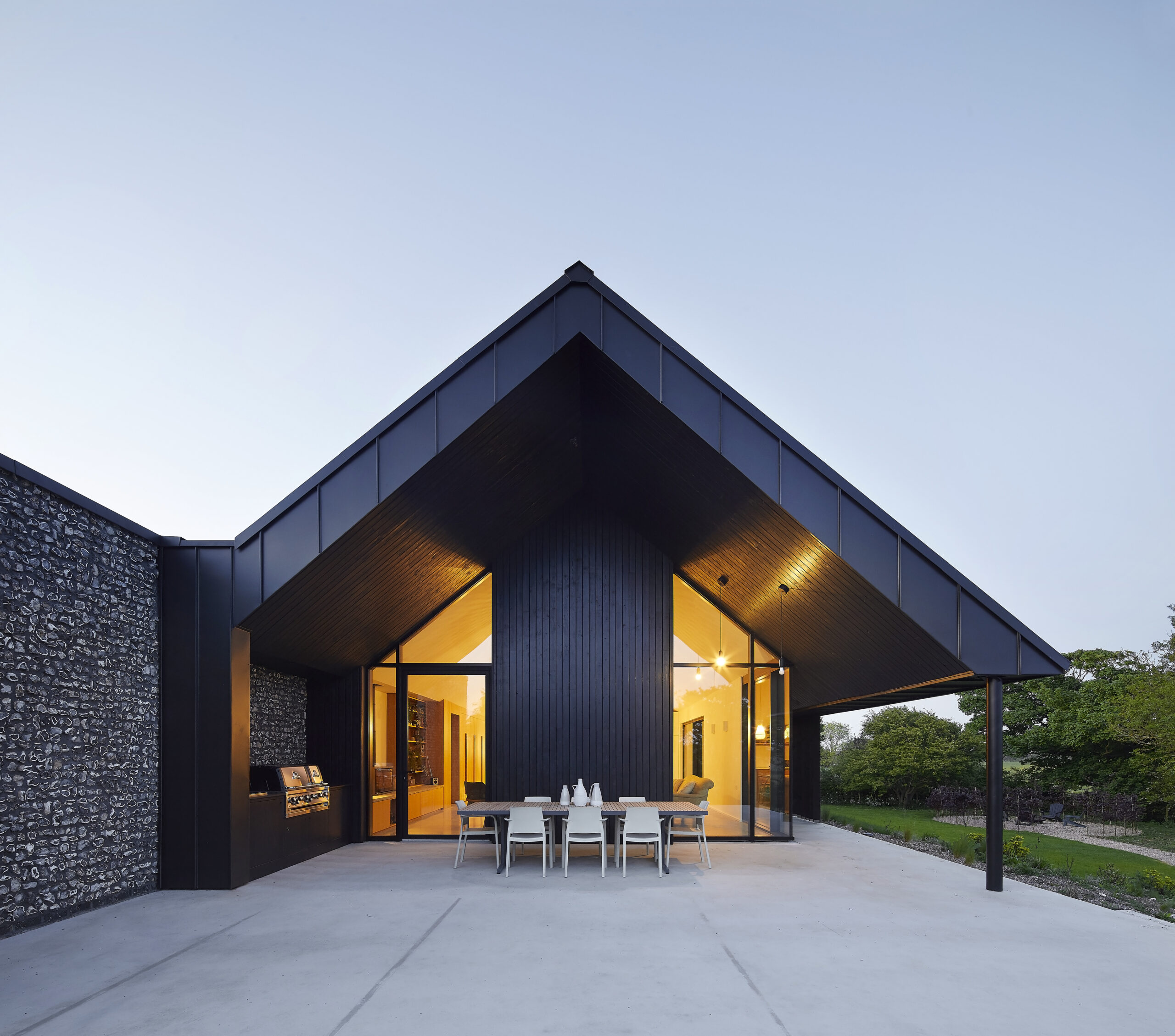
The single-story house provides a kitchen and dining space coupled with an open-plan living space; private study; two reading areas that brand out from the corridor; two bedrooms, as well as a master bedroom with an en-suite; and access to an outside bath.
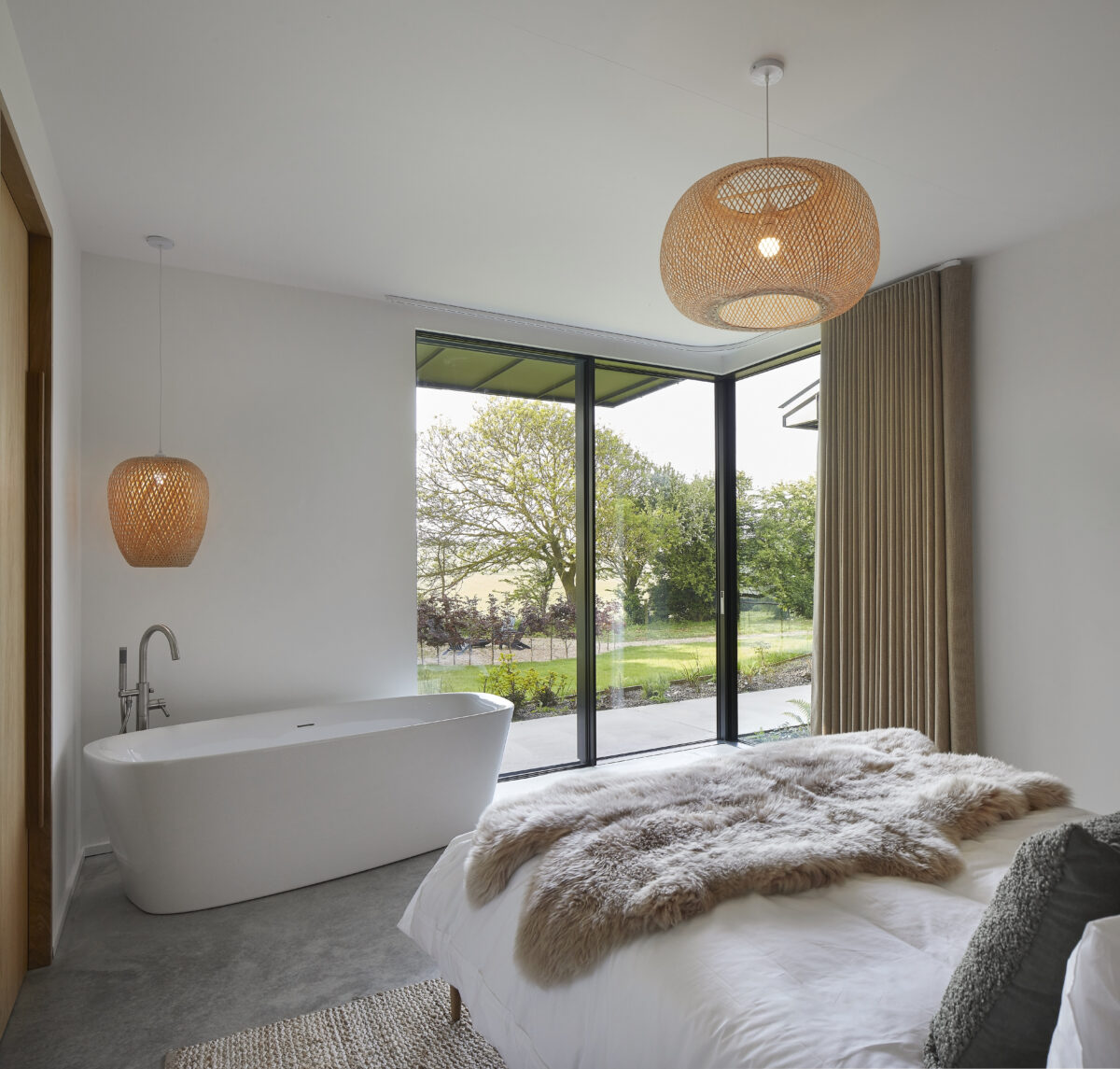
Set within a small cluster of houses and a flint church, West Meadow facilitates its assimilation with the local architecture by referencing its’ materiality. The flint wall envelops the entire front façade disguising the home from view, while acting as the spine of the home.
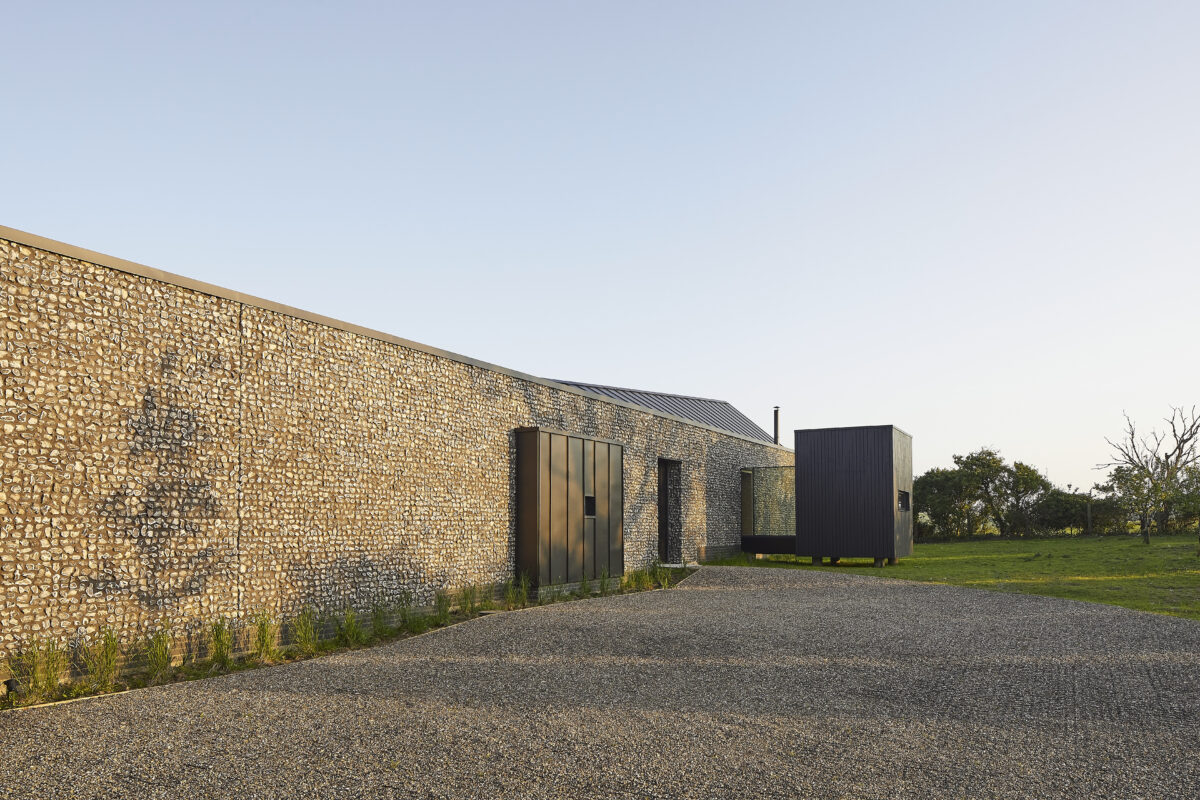
The wall is punctured by the cognitive study, Protruding, it echoes the form of a saddle hut, further contextualizing the design. Accessed through a glazed corridor, the divide between home and nature is blurred.
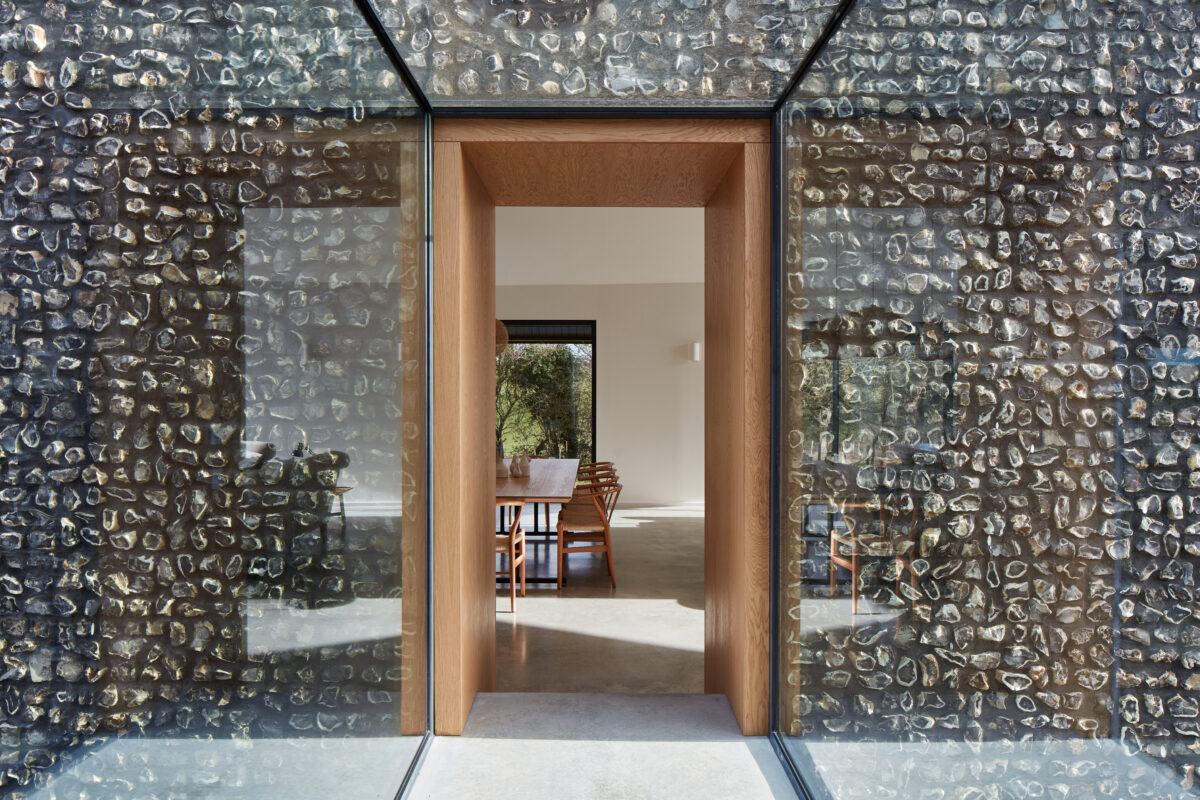
The roof is stylistic and functional, its hyperbolic paraboloid shape creates the illusion of a curve from its highest apex, at a 45-degree angle down to 5-degrees at its flattest point.
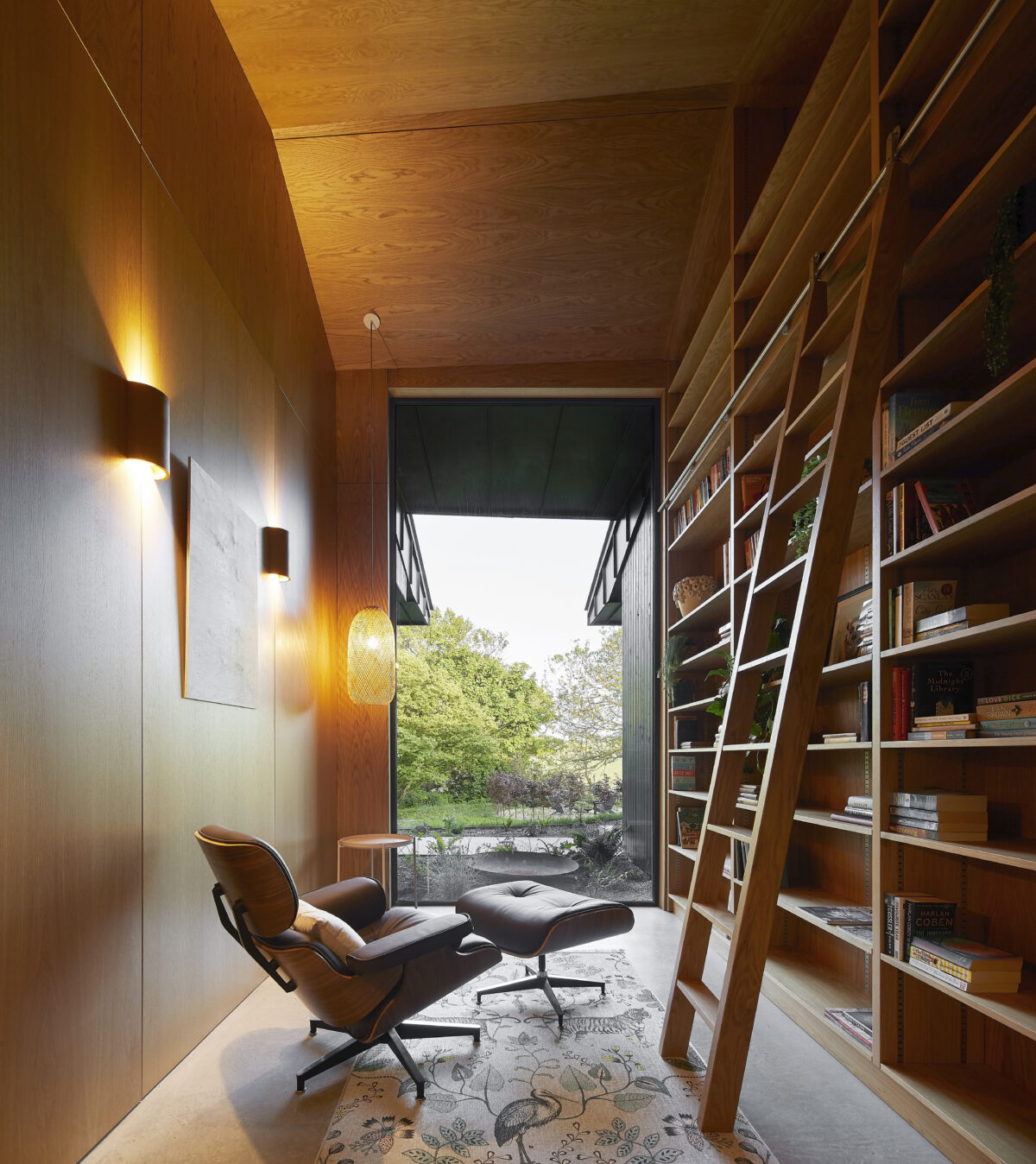
The double-height angled roof elevates the kitchen and living area while its lower, northernmost point creates warmth and security in the bedrooms. The dramatic slope hides the roof behind the flint wall, disguising it from view at Wallets’ Court.
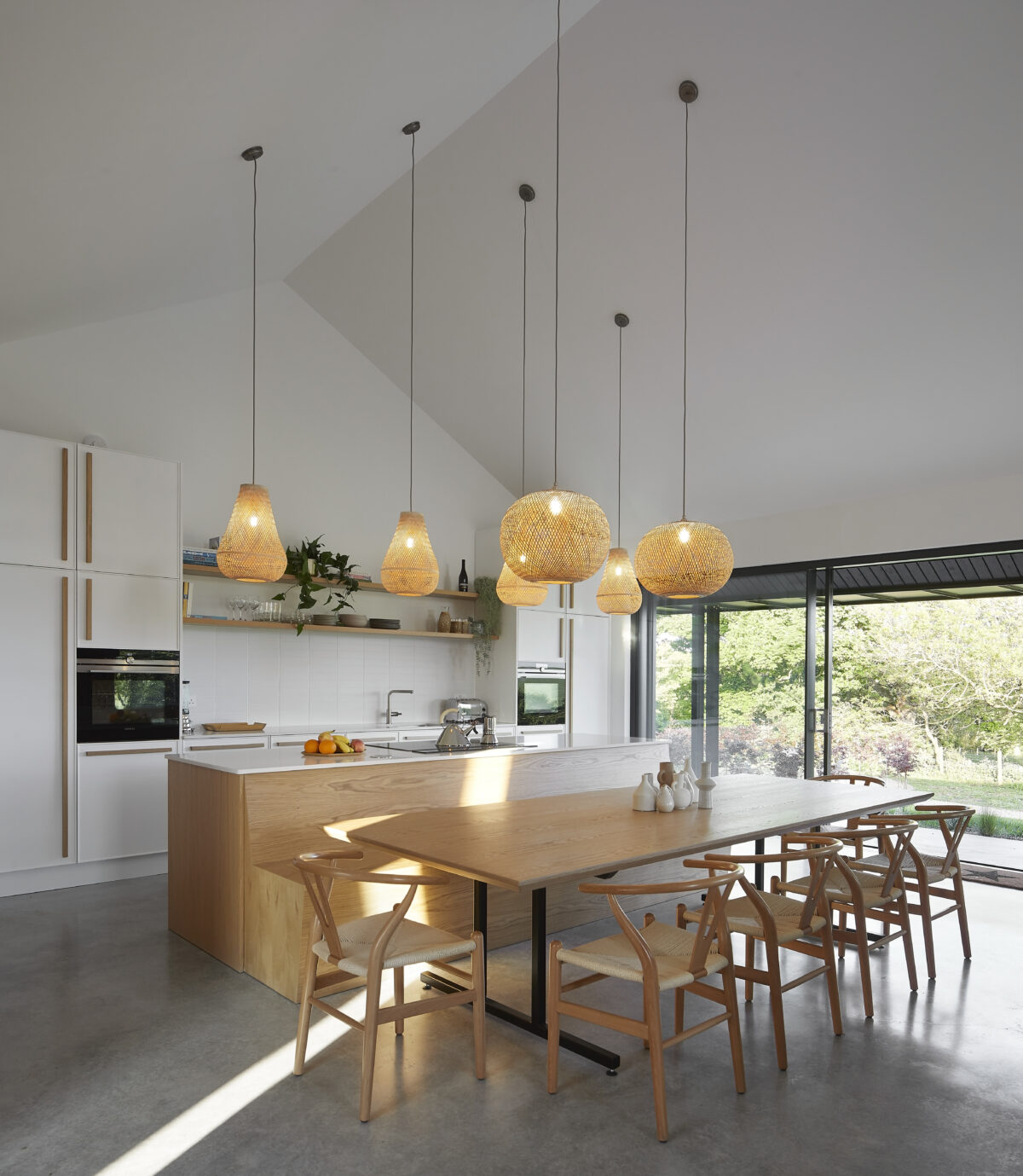
The home benefits from solar PV panels, an air source heat pump, rainwater harvesting and a high thermal mass. Acting as a heat store, the flint wall and concrete flooring regulate the house’s internal temperature. These self-sustaining solutions diminish energy usage and costs, reducing carbon consumption over the building’s lifespan.
